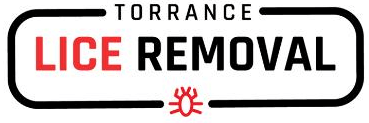What does head lice look like? Everything you wish you didn’t need to know about lice (but do) Head lice is hard to spot.
Here’s what parents need to know.
As a parent, you and your children will experience plenty of rites of passage. Some are exciting (first steps and riding a bike.). Others, you’ll dread. It’s safe to say a run-in with head lice falls into the latter category. Head lice is a common and harmless issue, but you’d probably prefer your child to bring home slime and glitter than this pesky problem.
You may wonder: What does head lice look like? Is there anything to do to prevent it? Can I make it go away sooner rather than later? Should I send my child to school?
We’re here to end your trip down the head lice rabbit hole. Here’s a head’s up on all things head lice.
Everything you — unfortunately — need to know about head lice
Understanding what to look for and how to react allows you to help your child treat and prevent head lice.
What does head lice look like?
Head lice are tiny, light gray bugs. One louse (the singular form of lice) typically measures about 2 to 3 millimeters — the size of a sesame seed. Though very small in size, head lice can quickly become a massive inconvenience. Head lice needs to consume human blood to live, so these tiny bugs set up shop on a person’s scalp, usually a child.
If that weren’t enough, head lice also lay and attach their eggs at the base of the hair shaft near the person’s scalp. These white, oval-shaped eggs start at about 0.8 millimeters and are called nits. A female louse can lay 10 eggs per day. They hatch after about a week and grow up quickly, becoming adult lice by 12 to 14 days.
How does head lice spread?
Head lice is very common. According to the American Academy of Pediatrics (AAP), millions of preschool and school-aged children develop head lice every year. Also, because head lice is spread through hair-to-hair contact many parents (mostly moms) and siblings get head lice as well. Head lice doesn’t fly like other insects, such as bees, though. Instead, they spread via prolonged head-to-head contact. Young children may butt or touch heads as part of play, making them more susceptible to head lice-think selfies, hugging, and snuggling.
Head lice need the warmth of the human scalp and blood to feed on to service. Rarely, but sometimes, head lice can spread through sharing items like hairbrushes, helmets, and baseball caps.
Signs of head lice
Though head lice is common; these bugs can be a challenge to spot. You may not even realize a child has head lice for four to six weeks. Some common symptoms of head lice include:
- Increased scratching in the infected area
- Feeling like something is tickling the scalp by moving
- Difficulty sleeping (head lice can be more active in the dark)
- Head sores from scratching so often — open sores can become infected if left untreated
Head lice treatment
In business since 2015, Torrance Lice Removal offers two treatments options: A Chemical-Free Do-It-Yourself Treatment kit for $69 can be picked at our clinic 24 hours a day. This includes a stainless-steel lice-comb, lice-suffocation oil, and our comb-out mousse. This option requires manual combing at home over a period of 10 days. Our most popular option is our Signature Treatment. This is a chemical free, in clinic five-step process by a certified head lice technician for a flat rate of $195-per person that takes around 90 minutes with a 99%+ success rate. No follow-up appointment is required and we offer an optional 30-day lice free guarantee.

